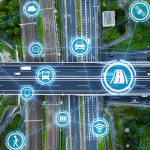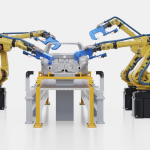As global tensions mount and trade routes shift, logistics networks are being reshaped not just by demand signals, but by geopolitics. In the past, adjusting to a new tariff or sanction meant high-level reviews, spreadsheet gymnastics, and weeks of cross-functional recalibration. Now, a new class of agentic AI systems is turning that lag into a real-time response.
Trained to detect and interpret geopolitical events, from port closures to new import bans, these autonomous agents can reroute shipments, switch suppliers, or reclassify cargo without waiting for human instruction.
From Strategic Monitoring to Tactical Execution
Geopolitical risk management in logistics has traditionally been the domain of strategy teams and compliance departments. But that model can’t keep pace with today’s volatility. The Red Sea shipping crisis, abrupt tariff hikes, and last-minute export controls have shown how fast conditions can deteriorate, and how slow static playbooks are to react.
The recent attack on a commercial vessel near Yemen’s Al Hudaydah port highlighted that fragility. Multiple small craft opened fire with self-propelled grenades, forcing the crew to abandon ship as black smoke poured into the night sky. Within a single 24-hour window, what began as a localized attack became a full-blown disruption to one of the world’s busiest shipping corridors.
Agentic AI systems are designed to act in that kind of window. Instead of relying on fixed rule sets or delayed chain-of-command responses, these agents continuously monitor structured and unstructured data sources, government alerts, customs bulletins, port advisories, and even satellite imagery or social media. When they detect a trigger like the Al Hudaydah attack, they autonomously assess exposure and initiate mitigations: rerouting through alternate ports, re-prioritizing low-risk SKUs, or initiating pre-cleared mode switches for embargoed cargo.
For instance, an agent trained on trade compliance logic and historical Red Sea volatility might instantly redirect goods via Piraeus or Jeddah, reprice the new route, notify impacted nodes, and alert customers, all before the operations team receives an incident brief.
The Emerging Geo-Aware Logistics Stack
Event Detection and Contextual Parsing: Natural language processing models, tuned to customs and geopolitical terminology, scan thousands of public data sources per hour. These agents don’t just flag “port closure”—they infer likely duration, regulatory impact, and relevance to current in-transit cargo.
Exposure Mapping and Flow Prioritization: Upon detecting a threat, AI agents map affected goods, nodes, and suppliers across the network. They triage based on value-at-risk, customer SLAs, and alternate route capacity. This isn’t just about reactivity—it’s strategic reallocation in real time.
Autonomous Mitigation Triggers: Agents can autonomously trigger workflows: booking alternative carriers, issuing advance customs documentation, reprioritizing staging plans at DCs, or activating bonded facilities for diverted imports.
Contract-Aware Decision Logic: Unlike basic automation, these agents operate within the bounds of commercial agreements—verifying if service-level deviations incur penalties, or if carrier switches are permitted under force majeure clauses.
Human Escalation for Tier 1 Impact: When risk thresholds are breached—for example, disruptions affecting high-value pharma SKUs—agents escalate to control tower operators with actionable recommendations and pre-modeled contingencies.
When Adaptation Becomes a Baseline Expectation
Global logistics is no longer a passive responder to geopolitics, it’s becoming an active, self-correcting system. But this shift also creates new questions. How do teams validate agentic decisions after the fact? Who holds accountability when an AI agent reroutes sensitive cargo through an unintended zone? And how do you ensure model transparency in regulated categories?
Agentic AI brings geopolitical adaptation to the edge of the operation, but also demands new governance, trust structures, and exception frameworks. For organizations willing to invest in that maturity, the payoff isn’t just risk mitigation, it’s continuity in a world that’s no longer predictable.





